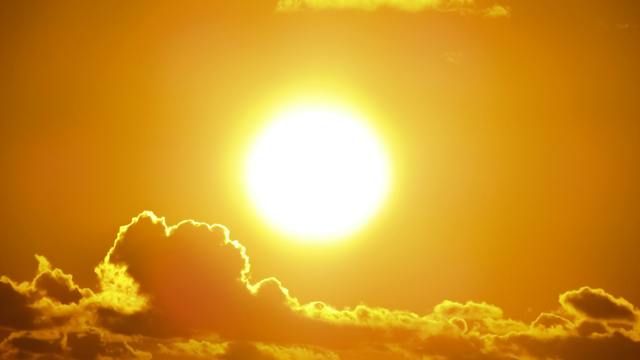
Why is looking at the sun dangerous? Because the UV light can burn a hole in the retinal tissue.
If you look at the sun for even a few seconds, you can badly damage your eyes, something called solar retinopathy. It is also called eclipse retinopathy because it is very common during solar eclipses. People want to see the eclipse and they think it is ok to look at the sun because it will be eclipsed by the moon, but it is still very dangerous. The point where the moon blocks out the whole sun is only very brief, and at all times before that point it is very dangerous to look at the sun. It is such a problem that, at least in the UK, the government puts out public health warnings before eclipses. This reduces the number of people affected with solar retinopathy, but there are always still a few people. Approximately 15 people are confirmed to have solar retinopathy after each major eclipse. It is a non-reversible permanent injury.
What does staring at the sun do to your eyes? Basically, it burns them. Light is coming out of the sun, but light is just energy. Energy is coming out of the sun. This is electromagnetic radiation and it comes out of the sun in a whole range of wavelengths with a whole range of different amounts of energy. At the bottom end there are radio waves and at the top end there are gamma rays. The visible light spectrum we can see is in the middle and Ultraviolet comes just after that. The amount of energy the light has is directly related to how much it can burn us.
When we are burned by something, such as boiling water, energy is transferred from the hot thing to our skin. Energy always wants to equalize itself, which is the reason we have entropy. If something is heated, it has extra energy and the molecules want to lose that energy. The energy will dissipate into the surrounding air until the temperature is equalized. Conversely, if something is frozen, it has lost energy and its molecules want to get that energy back. They will take energy from the surrounding air until they have equalized. If you tip boiling water on your hand, the extra energy the molecules in the water have will move to your hand because it is a lower temperature and energy always wants to move from hot areas to cold areas. When the energy gets into your skin, it will damage your cells, causing the burn and your body’s response to the burn.
Visible light doesn’t have enough energy to burn us. It can warm our skin, but it cannot penetrate our skin. UV light does have enough energy to get through the skin. That is why we get sunburned. If you lie out in the sun, the visible light will mostly reflect off your skin. The light you absorb will warm you. The UV light will go through the skin and cook the cells in whatever part of you is facing the sun. If you don’t lie there for very long, you will end up pink. If you lie there for a long time, you will get severely burned. The skin will try to protect you by releasing melanin, which is a suntan, but it cannot completely protect you.
And this is what causes the damage if you stare at the sun. The visible light will enter your eyes and your brain will register them as colors. The UV light will enter through your pupil and cook the cells at the back of your eye. This is not the only way the UV light damages your eyes. It also burns the cornea. This is called photokeratitis. The cornea is a layer of transparent cells that cover and protect the front of the eye. If these cells get sunburned, it can cause problems with vision, a lot of pain, sensitivity to light, headaches, seeing halos, and other problems. It is usually temporary, but that depends on how long you are exposed to UV light. Snow blindness is caused by photokeratitis.
When the UV light goes past the cornea, it enters through the pupil and hits the retina at the back of the eye. There are no pain receptors in the retina, so there is no way to feel that your eye is being burned. The UV light will burn the rods and cones in the retina, causing a blind spot or yellow spots. The body can heal itself and the vision will often return, but it can take over a year. Repeated exposure to UV light will make it worse.
Looking at the sun can raise the temperature of the eye by 4 degrees C, which is enough to burn your eye and should obviously be avoided, A worse thing to do, though, is to look directly at the sun through binoculars or a telescope. The lenses magnify the UV light and it can raise the temperature of the eye by over 20 degrees. Whatever you do, don’t look directly at the sun. And this is what I learned today.
Photo by Pixabay: https://www.pexels.com/photo/sun-301599/
Sources
https://www.gweye.com/blog/2021/08/10/protecting-your-eyes-why-you-209909
https://my.clevelandclinic.org/health/diseases/15763-photokeratitis
https://www.nvisioncenters.com/retinopathy/solar-retinopathy/
https://www.ncbi.nlm.nih.gov/pmc/articles/PMC1116382/
https://time.com/4890397/solar-eclipse-damage-eyes-protect/
https://www.emblemhealth.com/blog/health/the-science-behind-sunburns
https://stanfordhealthcare.org/medical-conditions/skin-hair-and-nails/burns/types.html
